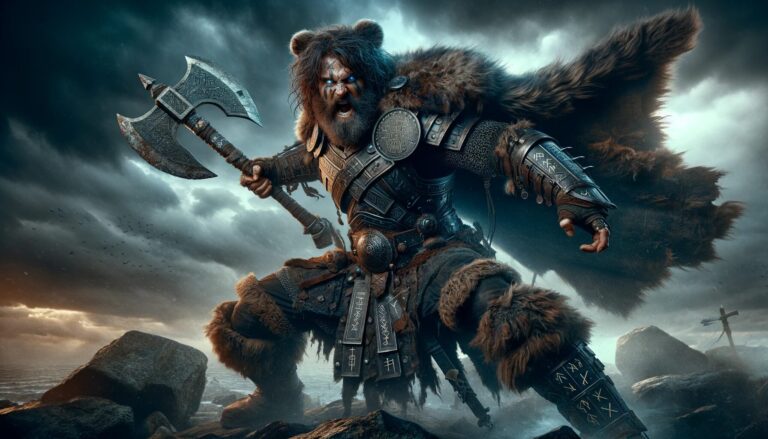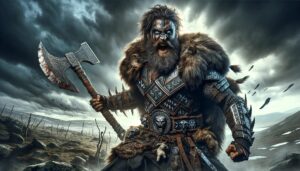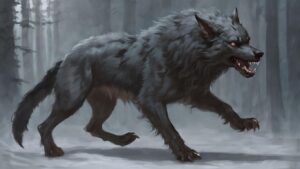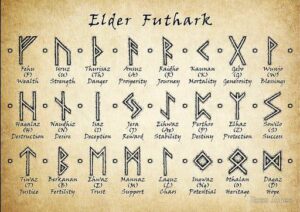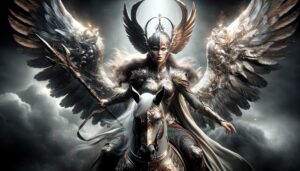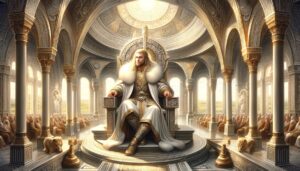Table of Contents
The term “Berserker” invokes images of fierce, wild warriors unleashing their inner beasts on the battlefield. In this article, we delve into the fascinating world of Berserkers – legendary warriors known for their unparalleled ferocity, unparalleled combat skills, and the mysterious trance-like states they entered during battle.
Origins and History
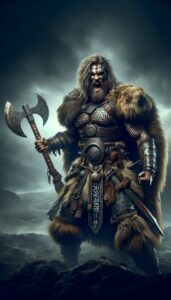
The term “Berserker” finds its roots in Old Norse, with “berserkr” meaning “bear-shirt” or “bearskin.” These warriors were renowned for donning the pelts of bears or wolves, symbolizing their connection to these powerful animals and channeling their strength in battle. Historical accounts and sagas from Norse mythology provide glimpses into the lives of these formidable warriors.
Characteristics and Battle Tactics
Frenzied State
One of the defining features of Berserkers was their ability to enter a state of uncontrollable frenzy during battle. This altered state of consciousness, often described as “berserkergang,” turned them into formidable adversaries. Some historical accounts suggest the consumption of hallucinogenic substances or engaging in ritualistic practices to induce this trance-like state.
Distinctive Attire
The Berserker’s choice of attire was not merely practical but held symbolic significance. Donning the pelts of fierce animals conveyed a connection to the wild and a belief in acquiring the strength and ferocity of the creatures they emulated.
Fearless Warriors
Berserkers were renowned for their fearlessness in the face of danger. Whether facing overwhelming odds or standing alone against an enemy force, these warriors exhibited a remarkable lack of fear, instilling terror in their opponents.
Legacy of the Berserkers
In the annals of history, the Legacy of the Berserkers stands as an enduring testament to the unbridled ferocity and indomitable spirit that defined these legendary warriors. Emerging from the mists of Norse mythology, Berserkers were not mere mortals but beings of unparalleled strength, channeling the primal forces of nature in the crucible of battle.
The Untamed Fury of Berserkers
With every clash of steel and thunderous roar, Berserkers unleashed an untamed fury that struck fear into the hearts of their foes. These warriors, often clad in the skins of bears or wolves, transcended the boundaries of mortal limitations. Their battle prowess was not merely a skill but a manifestation of an altered state of consciousness – the fabled berserkergang.
Frenzied Battle Trance
In the heat of battle, the Berserker’s eyes gleamed with an otherworldly intensity as they entered a frenzied trance. This altered state, induced by ritualistic practices or potent elixirs, transformed them into instruments of havoc. Fearless and relentless, they charged into the fray, their frenetic movements defying reason.
Symbolism in Pelts
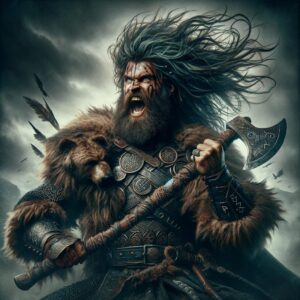
The symbolic significance of donning the pelts of ferocious animals was more than a fashion choice; it was a sacred connection to the untamed forces of nature. The bear or wolf skins were not mere garments; they were conduits of power, allowing Berserkers to embody the primal essence of the creatures they emulated.
Enduring Cultural Impact
The cultural impact of Berserkers echoes through the ages. From the pages of Norse sagas to contemporary media, their legacy endures. The archetype of the Berserker has inspired characters like Beowulf in literature and set the stage for visceral portrayals in television series such as “Vikings.”
A Lasting Imprint
As we delve into the Legacy of the Berserkers, we uncover not just a chapter in history but a saga of unmatched courage and unyielding strength. Their story, etched in the tapestry of time, serves as a timeless reminder of the boundless potential within the human spirit when unshackled and unbridled.
Cultural Significance
Norse Mythology
In Norse mythology, Berserkers were often associated with Odin, the Allfather. Some accounts suggested that Odin’s chosen warriors would assume the characteristics of animals, like wolves or bears, in battle, mirroring the Berserker’s connection to the wild.
Legendary Sagas
The sagas and stories of Berserkers have been immortalized in Norse literature. These tales recount their heroic exploits, emphasizing their extraordinary combat abilities and their ability to turn the tide of battle.
Modern Interpretations
Cultural Impact
The archetype of the Berserker has left an indelible mark on popular culture. From literature and films to video games, the image of the wild, frenzied warrior continues to captivate audiences worldwide.
Berserkers in Contemporary Media
Modern portrayals of Berserkers can be found in various forms of entertainment, such as the character of Beowulf in literature, the Viking-themed television series “Vikings,” and video games like “God of War.”
The Berserker warriors, with their ferocity, distinctive attire, and legendary battle prowess, remain a captivating and enigmatic part of history. As we explore their origins, characteristics, and cultural significance, the legacy of these fearsome warriors continues to endure, leaving an everlasting imprint on our collective imagination. The Berserker’s ability to tap into the primal and unleash the beast within is a testament to the enduring fascination with these legendary warriors.
